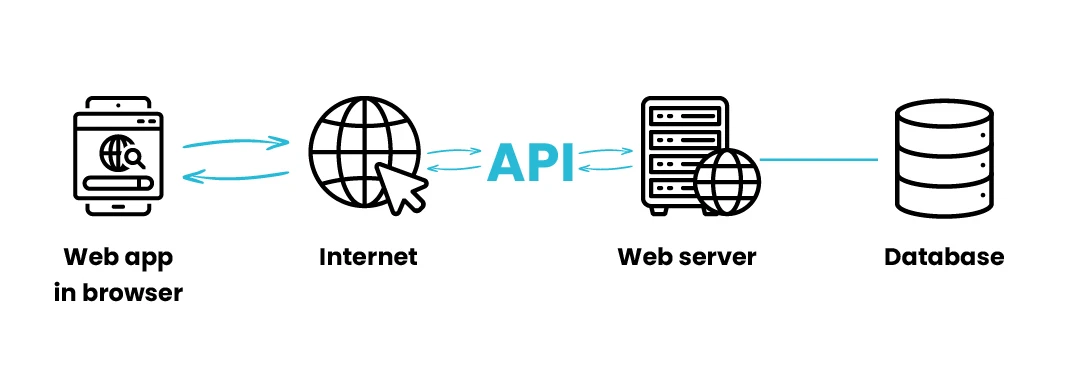APIs – bridges that connect software applications
Even in ancient times, messengers and bridges were fundamental in connecting people and sharing information. Today, we live in an age where modern technology plays a crucial role in achieving the same goal, and we must appreciate the role of APIs in our everyday lives. APIs connect applications, allowing them to transfer information and deliver services efficiently.
There are many ways to categorize APIs, but we’ll focus on the most popular one.
The most commonly used API is REST. The acronym stands for REpresentational State Transfer. REST APIs use HTTP methods, such as GET, POST, DELETE, and PATCH, to interact with resources. They typically represent server-side data in simple formats like JSON or XML, making the data easy to read and use.
Unlike REST, SOAP APIs are highly structured. They are formatted as XML documents and are commonly used as web communication protocols. SOAP stands for Simple Object Access Protocol. One of its main advantages is built-in error handling, which ensures that requests are properly executed. SOAP is often used in environments like net banking, where high security and reliability are crucial. However, a major drawback is that SOAP requires a lot of information, making it more rigid and formal.
If you’re looking to receive exactly the information you need, GraphQL might be the right choice. GraphQL APIs allow for transparent, well-defined queries, simplifying usage and increasing the likelihood that clients get precisely what they’re searching for.
Google Remote Procedure Call (gRPC) is an API that executes functions located on remote servers using HTTP methods like GET and POST. It’s designed for high-performance communication between services.
A powerful communication protocol that enables dynamic interaction over a single TCP connection is the WebSocket API. It allows clients to send a request to the server and receive event-driven responses, enabling real-time communication.
Finally, WebHooks are APIs that allow a server to push information to your application when a specific event occurs, without needing to continuously poll the server for updates. A good example is receiving a payment notification when a transaction is made from your bank account via internet banking.

As we can see, we use APIs quite often throughout the day, sometimes without even realizing it. Thanks to APIs, we have fun on social media, enjoy our favorite TV series on streaming services like Netflix, get excited when we receive a notification that our salary has been deposited into our bank account, search for the best nearby restaurants using Google Maps, and so much more.
